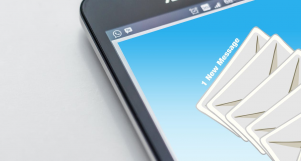This article was originally published in the October edition of 47, Pesel & Carr’s quarterly communications newsletter.
So you’ve made the decision to engage with your customers or clients via e-newsletter. You’ve set up a content plan, sourced some great content and images, and you’re about to press send… The last and most often overlooked step is the subject line. We’ve been gearing up for this newsletter and it got us thinking, what’s in a subject line?
Think about how many newsletters you receive every day. Like most people, it’s likely that you scan the contents of your inbox before deciding which messages are worth your attention. When you look at is that way, it’s a lot of pressure on a few little words!
Mailchimp analysed about 24 billion emails sent by their users, to better understand what practices result in the best open rates. In total those subject lines were composed using 22,000 distinct words… that’s a lot of little words.Here are four things to think about:
- Use merge tags to add personalisation – using this tool can increase open rates for most users, particularly when combined with a targeted newsletter such as a birthday deal or post purchase follow-ups. Interestingly, using both first and last name, whilst less common has the biggest impact on open rates.
- ‘Free’ vs ‘Freebie’ – including ‘free’ can significantly impact open rates, but only in certain industries such as hospitality and entertainment. It’s recommended that the medical, retail, and travel industries should avoid it. Interestingly though, the word ‘freebie’ was found to result in a much larger increase in open rates when compared to ‘free’.
- Urgency – all emails you send out are of importance to you, but there may be some that require immediate attention. Using words such as ‘urgent’ or ‘important’ resulted in higher open rates.
- Tell, don’t sell – subject lines that describe what is in the body of the email are more effective than overly promotional subject lines
We’ve also road tested subject lines with ‘47’, and whilst there is no formula for the best subject line, our advice is be direct. It’s better to communicate directly what your newsletter is about instead of being trendy or elusive.
We also believe it’s important to keep it as short and sweet as possible. Try to keep in mind that some users are opening your newsletter on a mobile phone; meaning you have a shorter word count to catch their attention
Mailchimp also offer tools to test your subject line and will give you a star rating on the best terms or phrases.
While we’ve highlighted the importance of a well thought out subject line and its effect on your open rates, consider this…
An unread newsletter can still be effective.
Think of it this way; a recent US study suggests that people are exposed to as many as 20,000 promotional messages daily, and it’s harder than ever before to get in front of your customer. So if you’ve survived the regular unsubscribe session and are still in their inbox; you’ve got one up on the ones that didn’t. (You do give customers the opportunity to unsubscribe, don’t you? Otherwise your emails may end up being caught up by spam filters.)
Even if that email remains unopened, you have still put your name in front of potential customers. Simply seeing a business name in their inbox, keeps you top of mind; reminding your customer that you are interested in their business, they need to call you, or that you’re an expert in your field.
That’s a lot of power, in an unopened email.
Sure, open rates are an important metric to measure the success of an email campaign, and carefully crafting your next subject line may get you one step closer to that coveted open. But remember, if your open rates aren’t as high as you’d like them to be, simply delivering the email is also powerful.


